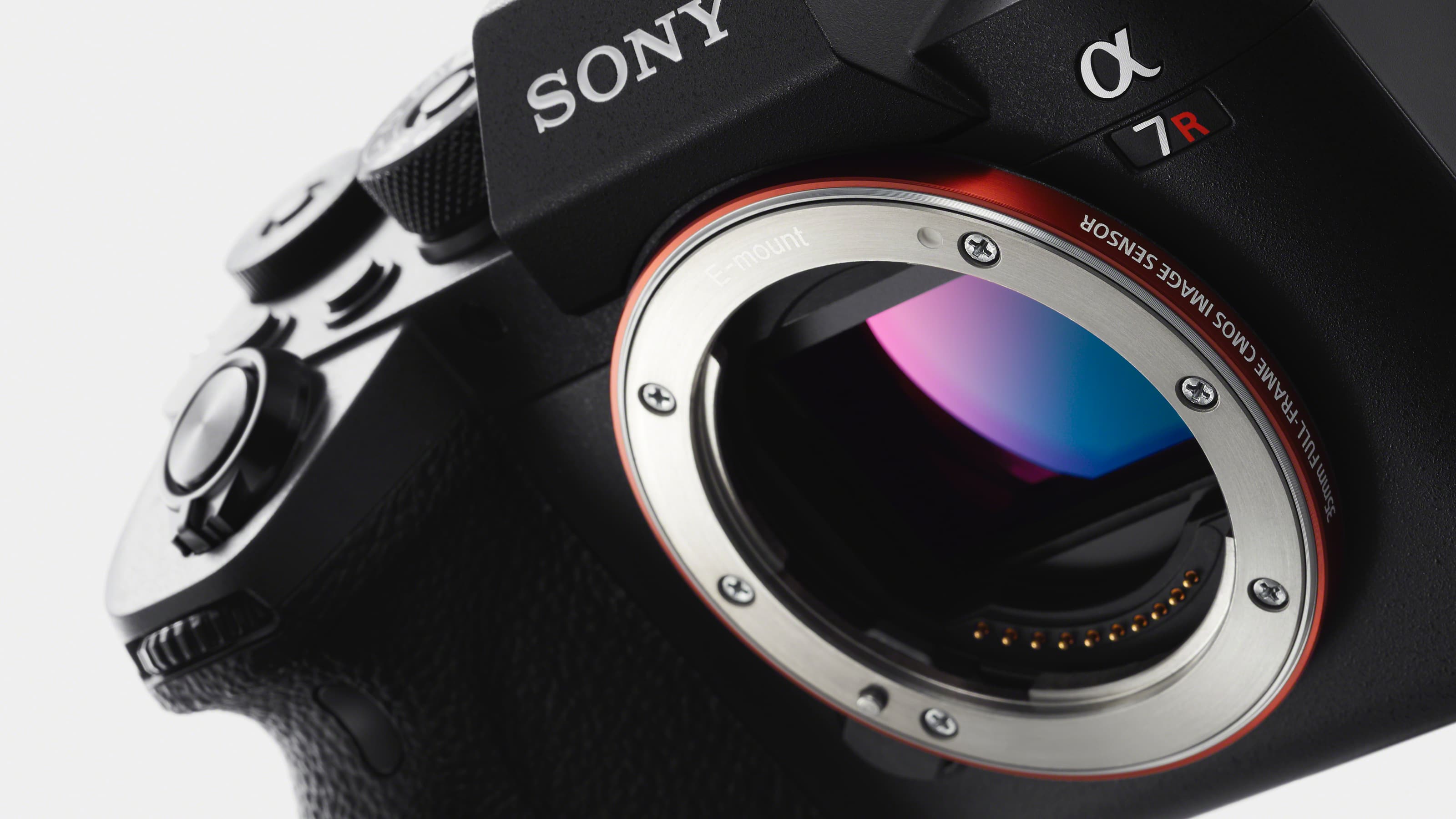
On May 24th this year, Sony held its 2023 Business Segment meeting, covering amongst other topics the corporation's strategy concerning its imaging sensor division. A PDF presentation covering the key points has been released, containing several interesting statistics about Sony's current position and planned future in the image sensor market.
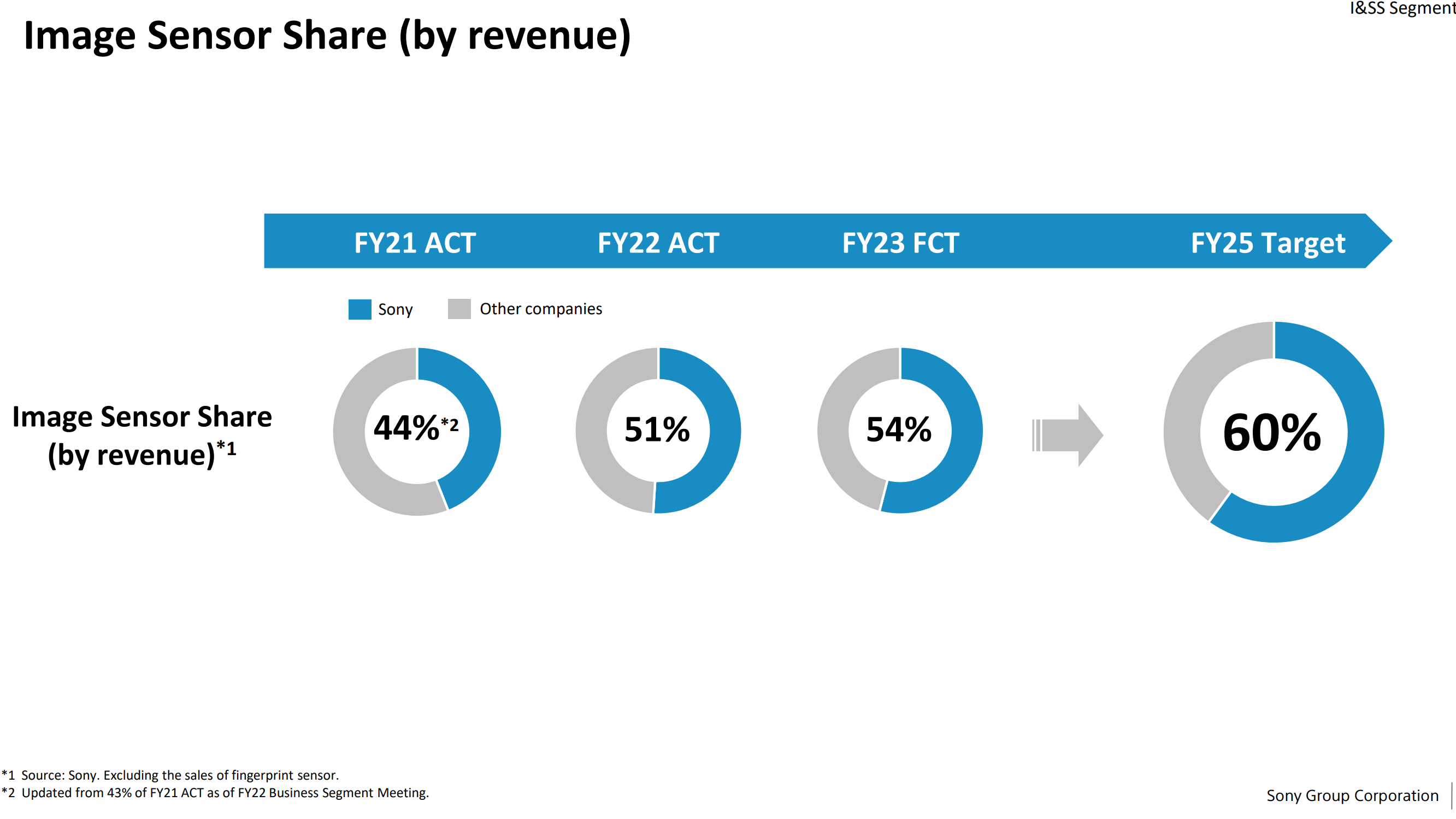
The headline figure here is Sony plans to have a 60% market share (by revenue) by 2025, up from 51% in the 2022 financial year, and a projected 54% share at the end of the current financial year. I was somewhat surprised that the percentage isn't higher, given that Sony IMX image sensors seem to be in many camera phones we review.
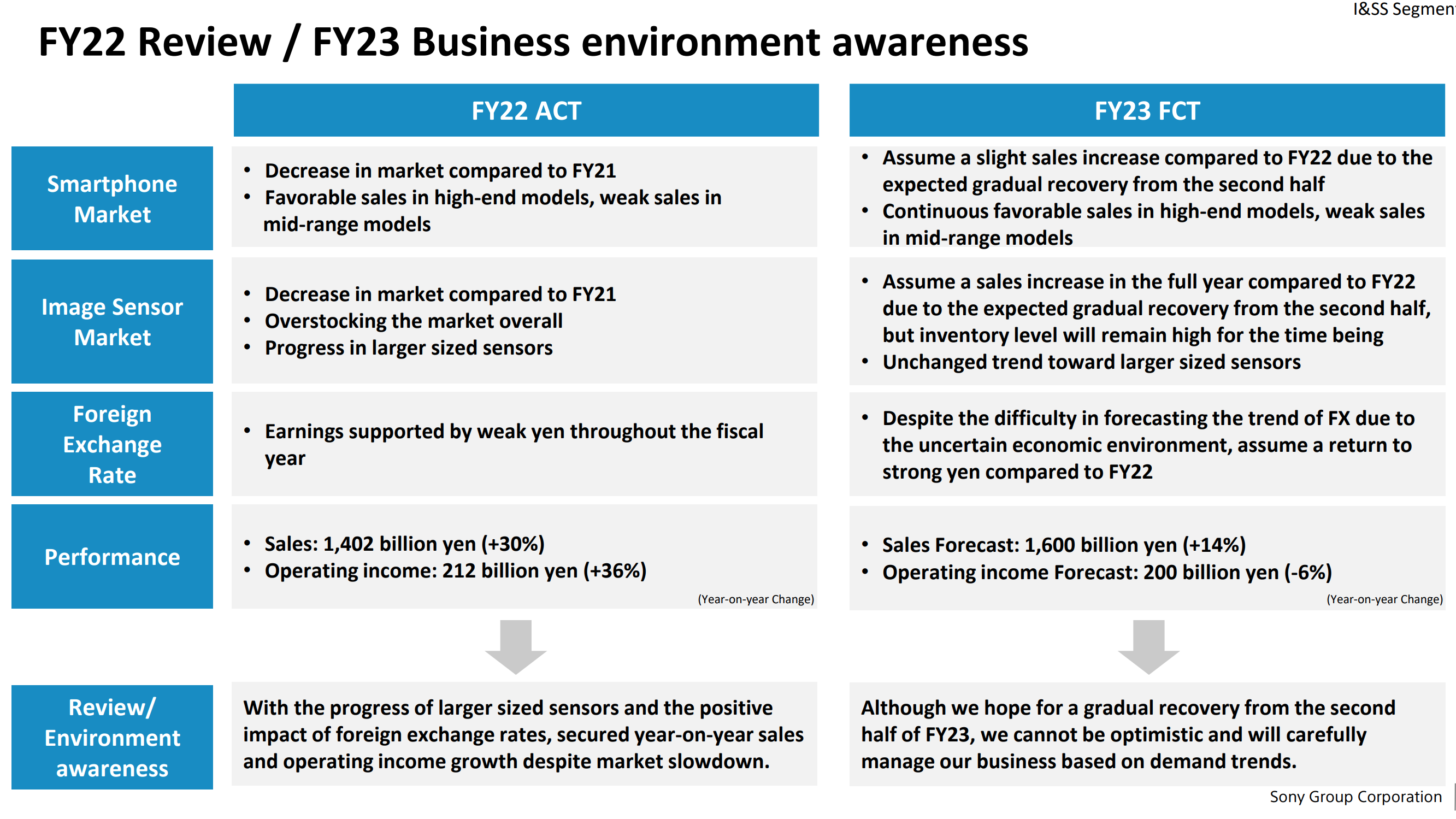
The presentation does shed some light as to why the figure isn't higher: Sony has weak sales in mid-range devices, and although "favorable" sales in high-end models will compensate to a degree, lost revenue in the high-volume mid-range camera phone sector will doubtless be hurting Sony's overall image sensor revenue.
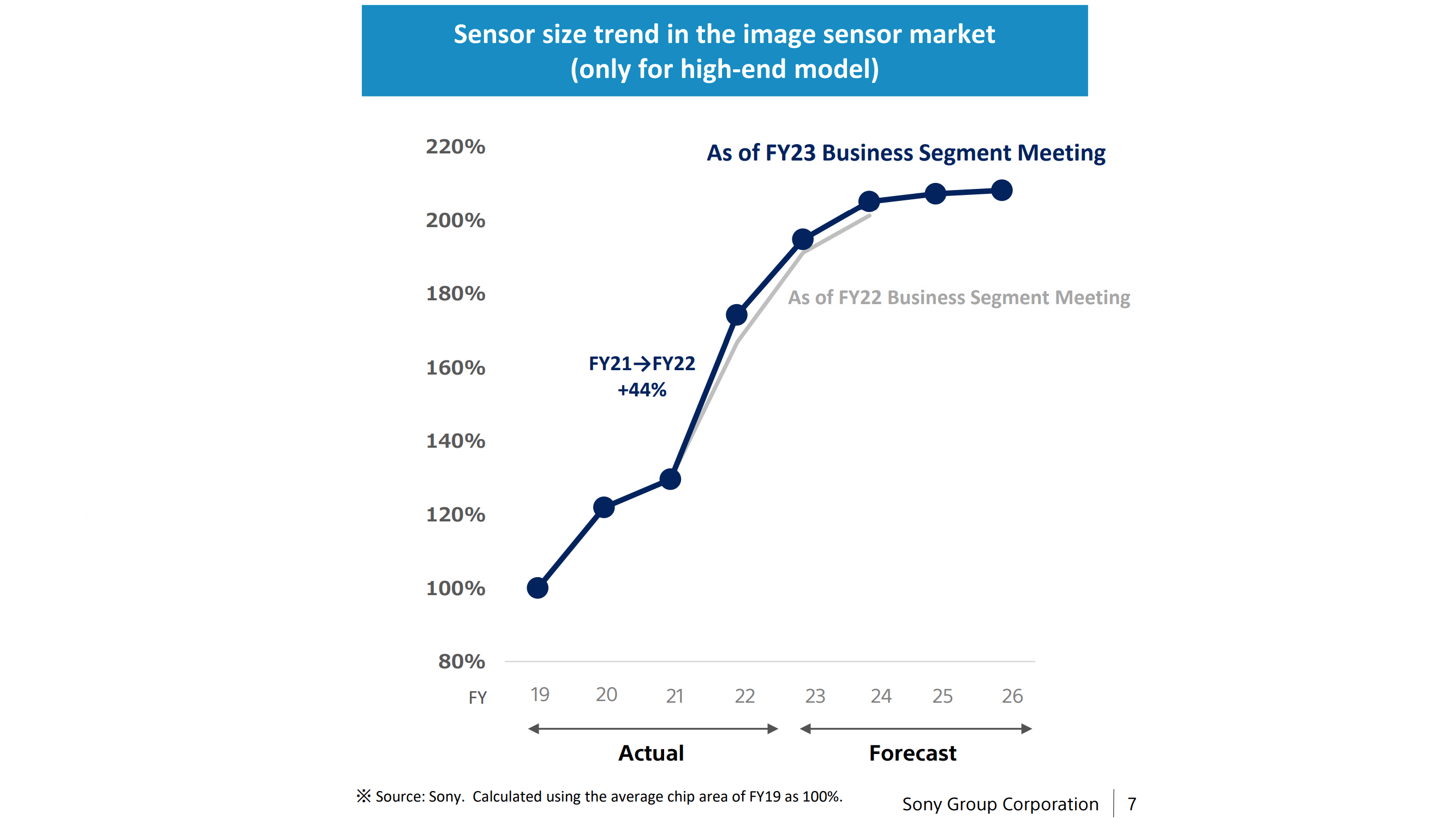
Rather than push for a greater market share further down the camera phone hierarchy, Sony is instead focussing on capturing a greater share of the high-end market, by capitalizing on the trend towards physically larger (and presumably more profitable) image sensors. One graph in the presentation suggests that between 2021 and 2022, high-end devices saw a 44% increase in image sensor area, with increased use of 1-inch-type sensors, and a push from 1/1.5" sensors to larger 1/1.3"-type.
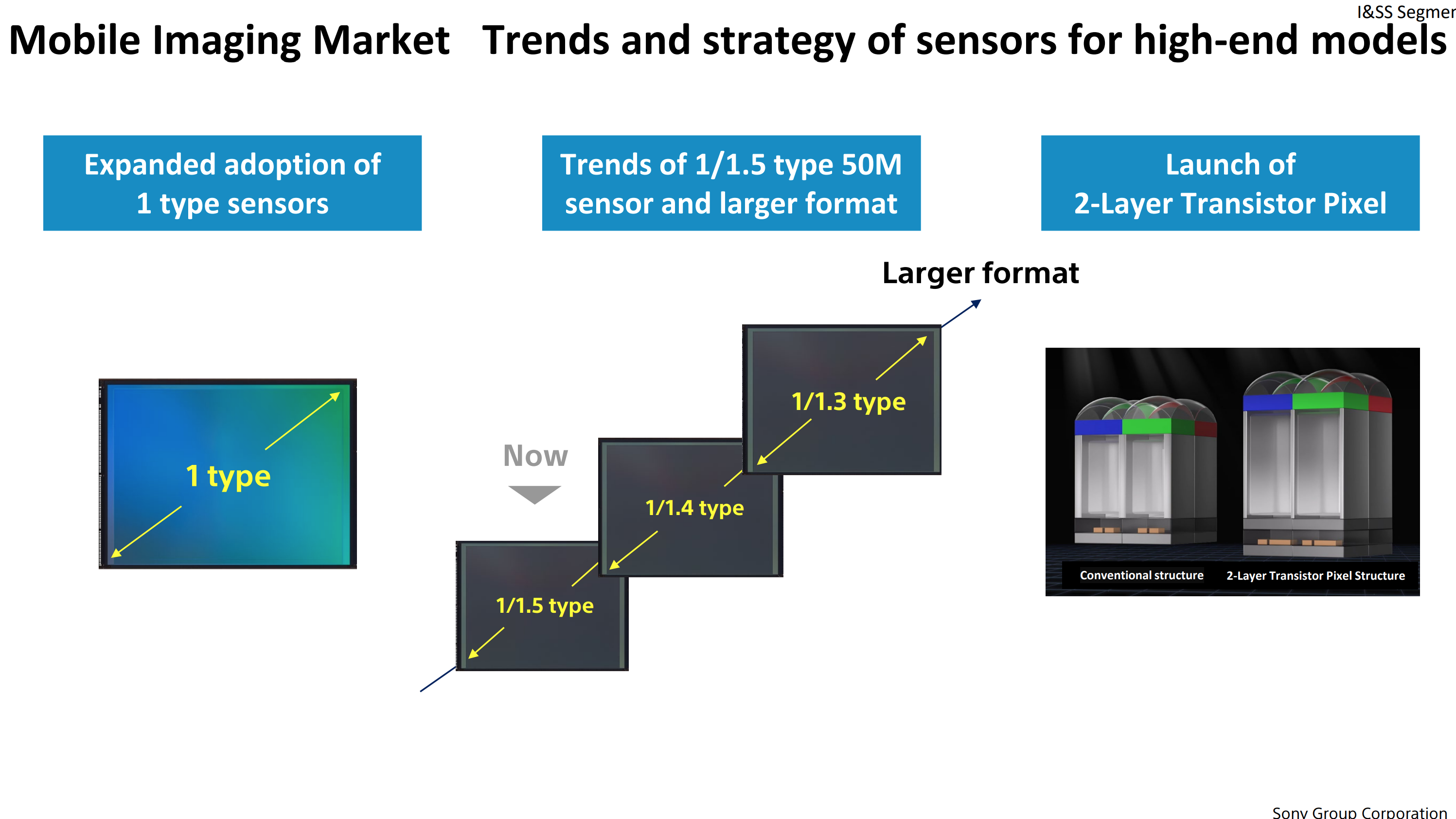
Where not so long ago a typical phone sensor was around 1/2.5" in size, we're increasingly seeing phones with 1"-type (or close to 1") primary camera sensors, as increasing sensor size is a sure-fire way to improve image quality. The larger the sensor, the larger the individual photosites ('pixels'), and the more light sensitive they become. The ability to gather more light over a set exposure duration enables the camera to increase dynamic range while also reducing image noise - it's the gift that keeps on giving. In some cases sensor manufacturers choose to also increase megapixel counts in line with the expanded sensor area, but usually this is done while also increasing the number of pixels being grouped together through the process of 'pixel binning', producing an overall larger and more light-sensitive 'effective' pixel.
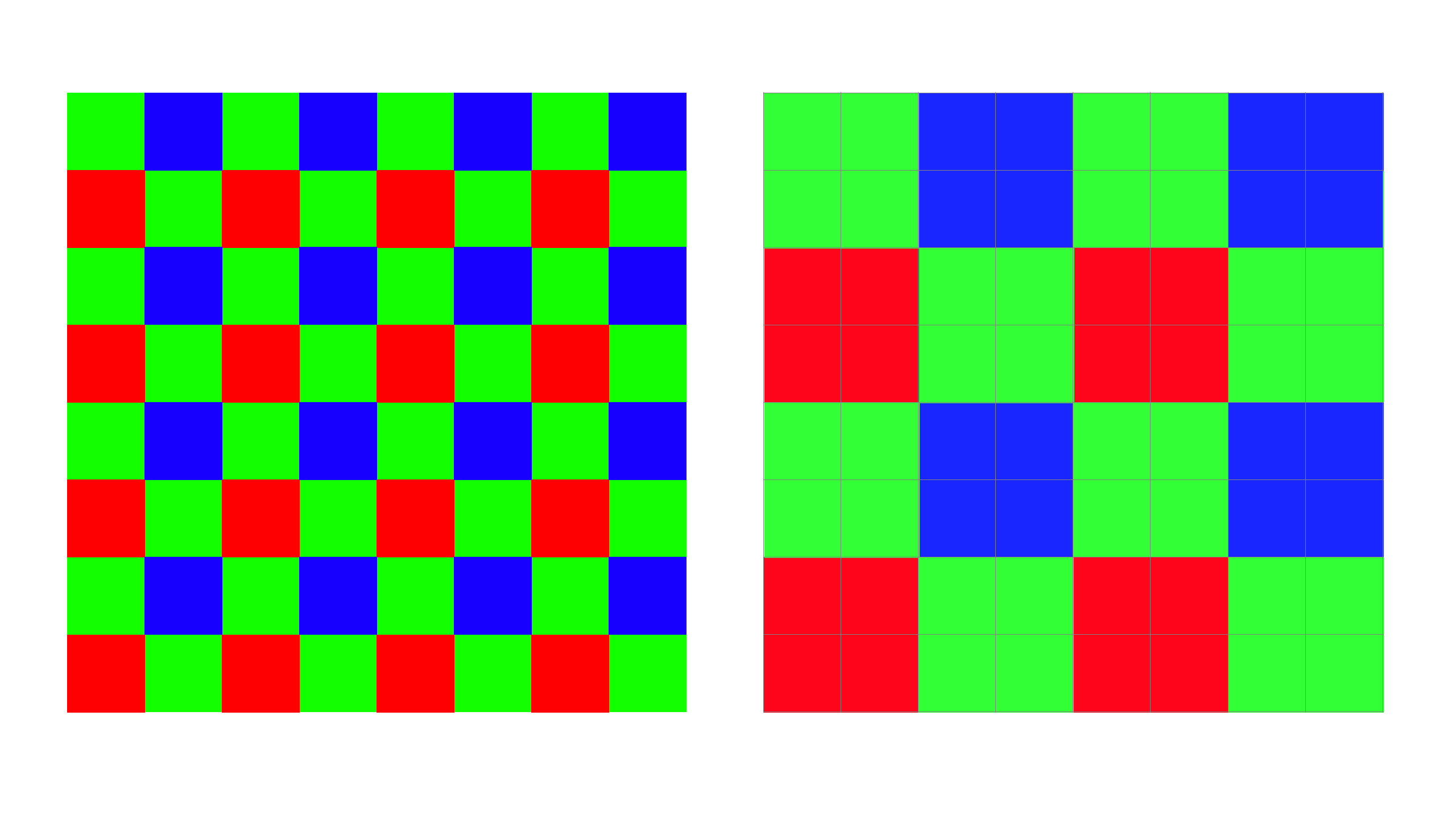
Side note: if all this talk of ‘1-inch’ sensors is making you think the sensors in question are actually 1 inch in size – they’re not, as a ‘1-inch’ sensor is around 33% smaller than 1 inch in size. This isn’t just Sony being economical with the truth – it’s an industry-wide myth, which you can learn more about here.
Read more:
Best Sony phones
The best camera phones
The best burner phones
Which is the best iPhone for photography?
The best TikTok lights
Best camera for TikTok







